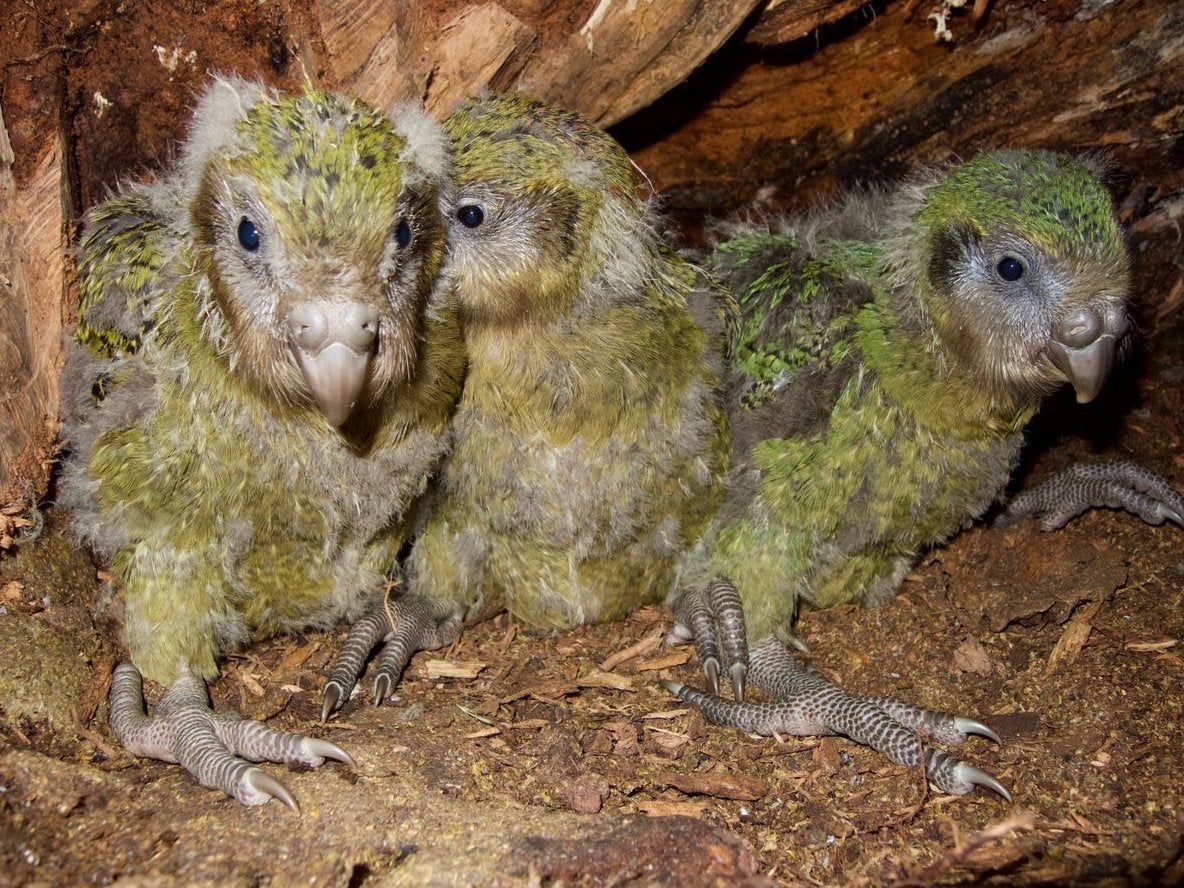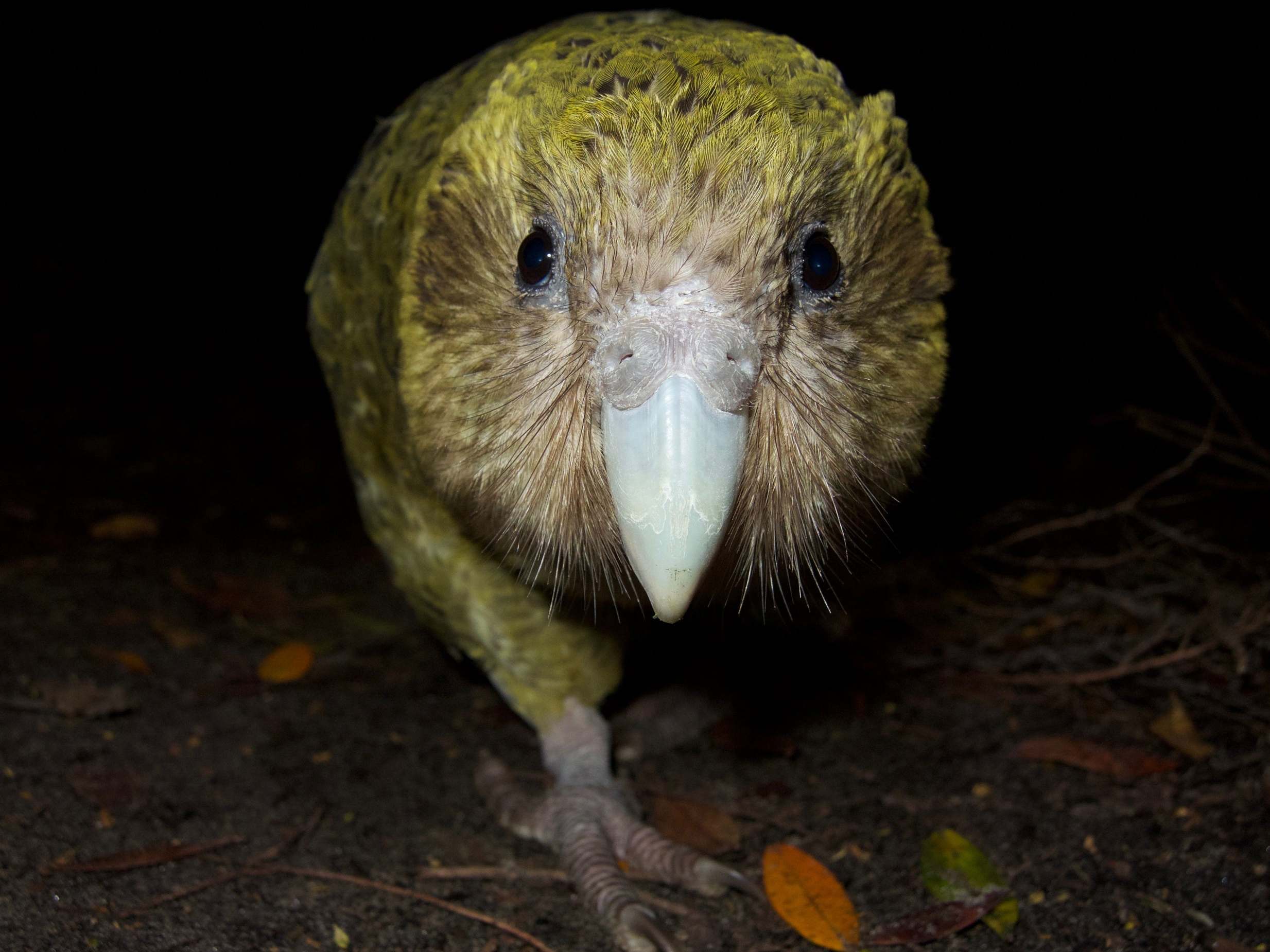World’s fattest parrot could be completely wiped out by fungal infection
‘They could all die. Obviously we’re trying very hard for that not to be the case’
Your support helps us to tell the story
From reproductive rights to climate change to Big Tech, The Independent is on the ground when the story is developing. Whether it's investigating the financials of Elon Musk's pro-Trump PAC or producing our latest documentary, 'The A Word', which shines a light on the American women fighting for reproductive rights, we know how important it is to parse out the facts from the messaging.
At such a critical moment in US history, we need reporters on the ground. Your donation allows us to keep sending journalists to speak to both sides of the story.
The Independent is trusted by Americans across the entire political spectrum. And unlike many other quality news outlets, we choose not to lock Americans out of our reporting and analysis with paywalls. We believe quality journalism should be available to everyone, paid for by those who can afford it.
Your support makes all the difference.The future of the world’s fattest parrot – New Zealand’s kākāpō – is at risk from a dangerous fungal infection.
Seven of the birds – an already critically endangered species – have died from aspergillosis, a type of fungus that can lead to a respiratory infection.
To date, New Zealand’s Department of Conservation (DOC) confirmed 36 of the remaining population of 142 adults and 72 chicks were in a veterinary hospital.
Seventeen of the nocturnal, flightless birds had received a preliminary diagnosis of the disease, which can occur when there is an abundance of the fungal spore in the environment, or if immunocompromised individuals inhale the spores.
In this case it’s thought the cause of the outbreak was a large number of spores in nests on Codfish Island (Whenua Hou) in the south of the country.
The deaths, which included a 100-day-old chick that died at Auckland Zoo on Tuesday, came just after conservationists had celebrated a record breeding season.
The parrot, which weighs up to 4.9 pounds, is one of New Zealand’s unique avian treasures, and has gone through a turbulent period of highs and lows over the years.
Once the third most common bird in the country their existence is now on the brink, thanks to the destruction of their habit and the introduction of non-native predators.
Since the 1970s a concentrated conservation effort to save the species has seen the parrot’s population rise from a low of just 51 to the current 142 adults and 72 chicks.
But the latest threat of a fatal fungal infection could pose a significant risk to the species.

Auckland Zoo’s head of veterinary services Dr James Chatterton told public broadcaster Radio New Zealand the birds’ future hangs in the balance.
“They could all die. Obviously we’re trying very hard for that not to be the case, but certainly with about 200 birds alive currently, every bird is valuable to the population, especially if we have another 10 or 20 sick or dying from this disease,” he said.
In a statement, DOC said the fungal infection was “having a devastating impact on kākāpō”.
It said staff were working hard, on top of the busy breeding season, to care for the affected birds and reduce the risk to the population.
“Currently, we think the cause of this outbreak is the significant spore loading in nests on Whenua Hou this season, coupled with possible nest stress leading to infection. We’re investigating other potential causes of low immunity.”

DOC was screening all the birds to check for the disease – with the birds most at risk being flown to the mainland from their habitat on Codfish Island (Whenua Hou), near Stewart Island, for further testing.
All remaining chicks in nests have been removed for hand rearing to prevent further exposure to high spore loading.

Join our commenting forum
Join thought-provoking conversations, follow other Independent readers and see their replies
Comments